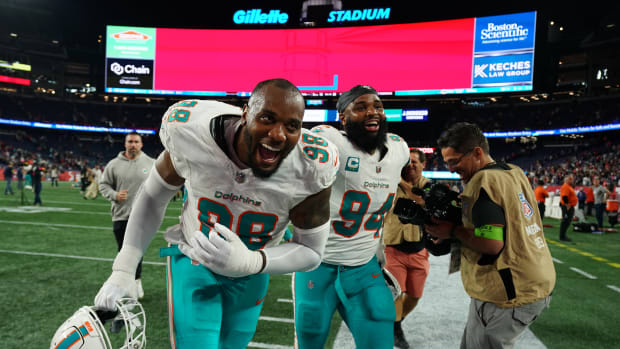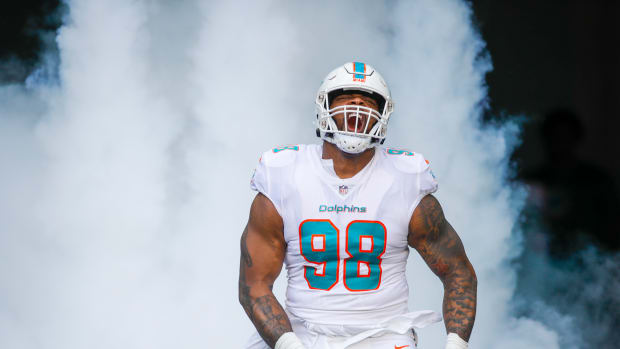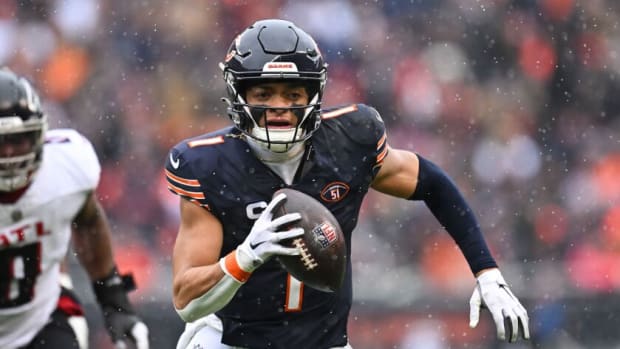Fan Question Film Room: How to Hide a Weaker Offensive Tackle?
While planning my offseason of film room articles on this Indianapolis Colts team, I asked the fans on social media what type of film content they would want to see this summer. The result of a fairly simple question was a ton of interesting ideas for articles. So, my idea for this new series that will run throughout his offseason is to base articles around my favorite questions I receive.
This first film room idea comes from Matt Mehringer (@mmehringer5) on Twitter. He asks about "ways we can hide (Sam) Tevi until (Eric) Fisher comes back from his injury." This question intrigued me quite a bit because the Colts have an elite offensive line at the moment, even with Fisher expected to miss time. I do think it is often underrated how a good offensive system can hide one weak link on the offensive line.
So to kick off this fan centered film room series, I will be looking at some subtle and some not-so-subtle ways to hide a weakness at left tackle.
Subtle Ways to Hide it
Back in 2018, the Colts decided to start a college guard at right tackle due to injuries. Fast forward two years and that guard is one of the best right tackles in the NFL. However, back in 2018, Braden Smith was fairly below average, as he was learning the position. Despite this, he only allowed 2 sacks in his rookie campaign.
So, how was he a below average tackle while only allowing 2 sacks? The Colts hid his deficiencies very well. Smith has elite physical gifts but he was still learning the proper footwork and hand placement to play right tackle. This left him susceptible to good pass rushers who knew how to exploit tackles like him.
The Colts, though, knew how to hide him without downgrading their offense. They knew that all they had to do was help Smith get his hands on his defender and he would be fine. The main way they did this was with running back chips out of the backfield. Here is an example of one below, where Nyheim Hines helps Smith retain control of his block on elite pass rusher Cam Wake.
Utilizing the running back chip was the main way the Colts assisted Smith, as it was an easy way to leak a player out of the backfield while also providing support. Another rather easy way they did this was by using in-line tight ends. By lining up a tight end right outside of Smith, this forces the defensive end into a wider alignment. From here, the tight end can either chip the end or just continue on the route and create more time for Smith to get into his position.
Here, Eric Ebron gets a hand on JJ Watt which gives Smith the time needed to get out wide on his set.
The last subtle way to cover up this weakness is to run play designs away from the weaker tackle and shift the pocket away from the potentially dangerous rusher. This could be a more drastic change with a weaker offensive tackle but with Smith in 2018, the Colts ran a lot of their key play-actions and leak out plays away from the right side. This helps Smith by moving the pocket away from him and making his block less on an island.
Here the Colts leak out Jack Doyle away from Smith's side for the easy touchdown.
Not-So-Subtle Ways to Hide it
In 2018, Smith was a below average tackle. What happens when the tackle that you have to hide is worse than that? Well, we saw it a bit last year when the Colts had to play players such as Le'Raven Clark, Chaz Green, and J'Marcus Webb a handful of times at tackle.
When there is a drastic drop-off in talent at one offensive line spot rather than a minor drop-off, the offense needs to change a bit. One way the Colts assisted Green when he had to start was by incorporating more RPO (run-pass option) looks in their offense.
While Philip Rivers was never a threat to run in a RPO look, the main reason for running it is that it forces the defensive line into run gap assignments. Anything that prevents the defensive line from attacking your weaker player is a win in this instance. Here, Rivers quickly pulls the ball out and completes a pass before Watt can even reach Green on the edge.
The other way to cover up this weakness is to get the running backs more involved in the passing game. The Colts have an elite receiving back in Nyheim Hines and other capable pass catchers on the roster. By using quick screens, flare outs, flat passes, "C" routes, and other quick hitters, the Colts can get the ball out of the quarterbacks' hands before the poor offensive tackle can get beat. Here Nyheim Hines catches a pass for an eight yard gain before Green can be beat on the outside.
Final Thoughts
I think this topic was a great one to kick off this series and I appreciate Matt asking the question. Offensive tackle play is vital to team success but it is fairly easy to mask a weaker one when the other four starters are as good as the Colts' starters are.
I am one of the biggest supporters of Sam Tevi out of Colts' fans but even I know that he's a below average player in this league. He will need help and I think we can look at how the Colts helped Smith in 2018 as a guideline in this instance. Tevi will have his struggles but I am confident in the Colts finding ways to cover up this weakness up front.
Colts Fans! I want to make this series a long running one here on the site this offseason. If you have any ideas for film rooms that you want to see, send me a message at my Twitter handle before or reach out to the Horseshoe Huddle page on Facebook or Twitter.
Follow Zach on Twitter @ZachHicks2.




